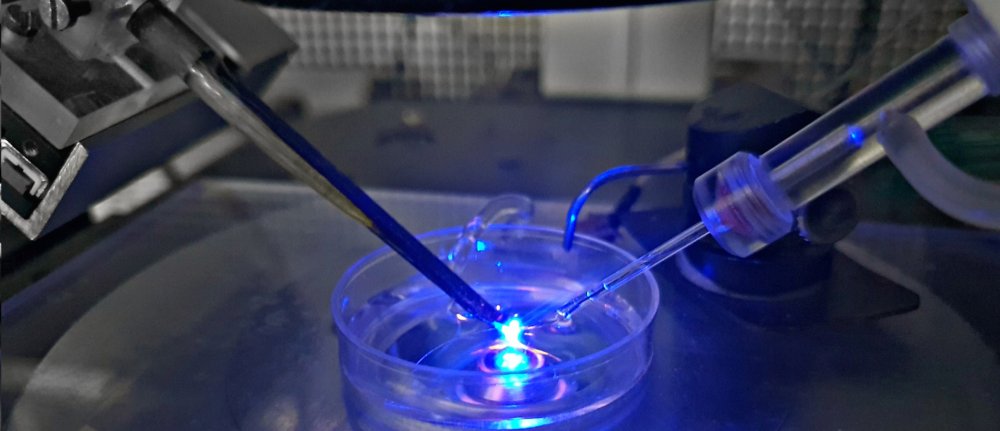Laboratory of Cellular Neurophysiology

Content of this page

About the Laboratory
Research of the Laboratory of Cellular Neurophysiology focuses on the function and pharmacology of ionotropic receptors (ligand-activated ion channels), specifically ionotropic glutamate receptors (iGluRs) and transient receptor potential (TRP) channels. iGluRs mediate the majority of excitatory signaling in the central nervous system, are essential for normal brain development and function, and their dysfunction leads to serious neurological and psychiatric disorders, including many forms of neurodegeneration. TRP channels are present in both the peripheral and the central nervous system, and they play a fundamental role in the detection and transmission of painful stimuli and participate in signaling associated with chronic inflammation.
The goal of our research is to better characterize the relationship between ionotropic receptor structure and function, to identify molecular mechanisms of ionotropic receptor modulation by different chemical compounds or physical variables, and to describe the consequences of mutations of human ionotropic receptors for the function of synapses, neurons and neuronal networks. Obtained results deepen our basic understanding of the mechanisms of ionotropic receptor function, and inform the development of novel receptor modulators with therapeutic potential in the treatment of neurodevelopmental and neurodegenerative disorders.
Publications
Tragl; A. - Ptáková; Alexandra - Sinica; Viktor - Meerupally; R. - König; Ch. - Roza; C. - Barvík; I. - Vlachová; Viktorie - Zimmermann; K. A fluorescent protein C-terminal fusion knock-in is functional with TRPA1 but not TRPC5. Biochimica Et Biophysica Acta-Molecular Cell Research. 2025; 1872(2); 119887.
IF = 4.6
Candelas Serra; Miriam - Kuchtiak; Viktor - Kubik-Zahorodna; Agnieszka - Kysilov; Bohdan - Fili; Klevinda - Hrčka Krausová; Barbora - Abramová; Vera - Dobrovolski; Mark - Harant; K. - Božíková; Paulina - Černý; Jiří - Procházka; Jan - Kašpárek; Petr - Sedláček; Radislav - Balík; Aleš - Smejkalová; Tereza - Vyklický ml.; Ladislav Characterization of Mice Carrying a Neurodevelopmental Disease-Associated GluN2B(L825V) Variant. Journal of Neuroscience. 2024; 44(31); e2291232024.
IF = 4.4
Ivica; J. - Kejzar; N. - Ho; H. - Stockwell; I. - Kuchtiak; Viktor - Scrutton; A. M. - Nakagawa; T. - Greger; I. H. Proton-triggered rearrangement of the AMPA receptor N-terminal domains impacts receptor kinetics and synaptic localization. Nature Structural & Molecular Biology. 2024; 31(10); 1601-1613.
IF = 12.5











